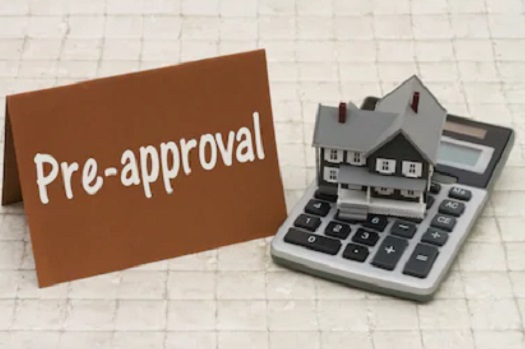Gearing up to buy your first house is a major milestone and cause for celebration. But if you’re not sure of the steps to follow, you could bump your head against frustration, stress, and disappointment. With the right real estate agent and a bit of foresight, you can focus on the joy of house-hunting.
The qualified professional real estate agent you hire is your best ally when it comes to understanding the home-buying process. But, to give you a head start in the right direction, here are the six necessary steps to buying a home.
Step One: Financial Matters
You may be aware that you’ll need to put down a deposit on the house you buy, but that deposit can be as much as 20 percent of your home mortgage loan unless you’ve arranged special financing or applied for a program that assists with down payments. So if you’re buying a house for $250,000, your down payment could be as high as $50,000 – cash.
Buyer’s, at the end of the transaction, are responsible for another lump sum of fees called closing costs. A large part of closing costs for buyers are lender fees (so it’s crucial to shop lenders!). But closing costs also pay for services like an appraisal and inspection, homeowners insurance, property taxes, title check and transfer, and more.

Closing costs range between two and eight percent of the amount of your home mortgage loan but typically fall at around five percent. Closing costs, then, on a $250,000 home can be figured at about $12,500 or more.
In most cases, lenders do not allow buyers to roll closing costs into a home mortgage loan, but there are exceptions. You might be able to finance your closing costs, but at a higher interest rate – and you’ll be paying interest on those closing costs for the life of your loan.
Another expense many buyers don’t see coming is called an earnest money deposit, or a good-faith deposit, which you’ll submit with your offer on the house you decide to buy. An earnest money deposit is usually one to two percent of the home’s sales price, which equates to another estimated $3,750.
Step Two: Debt-to-Income Ratio and Credit Score
In addition to the need for cash on hand, you’ll need to bring a solid credit history and a low debt-to-income ratio to the table.
A debt-to-income ratio (DTI) measures the amount of money you have coming in each month against the total of your expenses. For this reason, it’s essential not to finance anything significant at least two years before your home purchase.
A healthy debt-to-income ratio is 43 percent or lower. You can determine your DTI, add up all of your monthly debts, and divide that number by your gross income. If your DTI is at 43 percent or higher, you can improve that number by reducing the amount of debt you have or increasing your income. However, it’s critical that you don’t change jobs at least two years before moving because lenders need to see good work history.
Your credit score should be 620 or higher and show that you’ve borrowed and repaid money responsibly to buy a house. You need your credit report to be free of delinquent accounts or derogatory marks. If your credit score is too low, pay off any outstanding debts and get proof of payment in writing.
Be prepared to supply documentation for every account and source of income you have, including pay stubs, tax documents, bank statements, credit card statements, and more.
Step Three: Get Pre-Approval for Your Home Mortgage Loan
Getting approved for a home mortgage loan could be the most time-consuming part of your process, especially if your finances, DTI, and credit score need work. It can take extra time if you don’t have your documentation ready.
Pre-qualified and pre-approved are not the same. Pre-qualified means that the lender, based on informal information, suggests that you’ll probably be approved. On the other hand, pre-approved means that you’ve already gone through the application process, and the lender has agreed to loan you an agreed-upon amount.

Pre-approval empowers you to buy instead of just window shop. Pre-approval empowers you to buy, but it also lets you know your exact home-buying budget. You’ll know what price point you’re in.
Another benefit to pre-approval is that it might give you an upper hand in the case of competing offers. If a seller sees that one buyer is pre-approved and the other isn’t, he or she may be inclined to go with the offer that’s been approved.
Step Four: Your Agent, Your Wish List, and Your Budget
Understandably so, buyers often misgauge what their money can buy in real estate. They imagine central locations next to excellent parks and schools, public transportation, restaurants, and recreation.
They’ve also dreamed up beautiful finishes in their homes, such as granite countertops, wood floors, or updated stainless-steel appliances. But when it comes time to house hunt, they’re easily deflated. You might have to sacrifice location or features to fit in your pre-approved home-buying budget.
Talk with your agent or realtor about your needs that must be met, your wants, and the things you may be willing to negotiate. You can then enjoy the house hunt, knowing that what you’re shopping for is reasonable and within your budget.
Step Five: Offers, Negotiations, and Bidding Wars
Don’t get overly excited when you submit an offer on a house. Chances are, someone else has been eying that house, too. You may find that yours isn’t the only offer on the table.

Talk with your agent about your max budget, and any contingencies you may need to include – but understand that every contingency could be a hiccough in your plan.
Be prepared to negotiate with the seller, which could take a few back-and-forth counter offers and could take a few days. But even when the seller says yes, they’ll sell you the house, it’s not time to kick up your heels. You still have to navigate through the closing process.
Step Six: The Closing Process
Your lender needs to know that the property you’re purchasing is valued at the amount that you’re borrowing, so the lender requires an appraisal. Likewise, you and the lender need to know that the home you’re buying is in sound condition, so it has to be inspected.
The closing process is also when the title is checked for liens or tax holds, contracts are prepared, papers are signed, and other necessary steps to close your transaction. You can anticipate the closing process to take around 30 days, so you’ll need to be patient.
Conclusion
Before you pound the pavement looking for your dream home, make sure you’ve got your money, numbers, and paperwork in order. Get pre-approved for your home mortgage loan.
Be realistic about your wish list and your budget. Trust your agent to help you submit and negotiate a competitive offer and guide you, step-by-step through your journey into homeownership.
Hire a real estate agent who makes you feel comfortable, answers your questions quickly and competently, and who instills in you a sense of confidence in finding and buying your first home.
Have Questions? Ask Allison!
Your real estate agent is the best source of information about the local community and real estate topics. Give Allison Norman call today at 707-799-3617 to learn more about local areas, discuss selling a house, or tour available homes for sale

